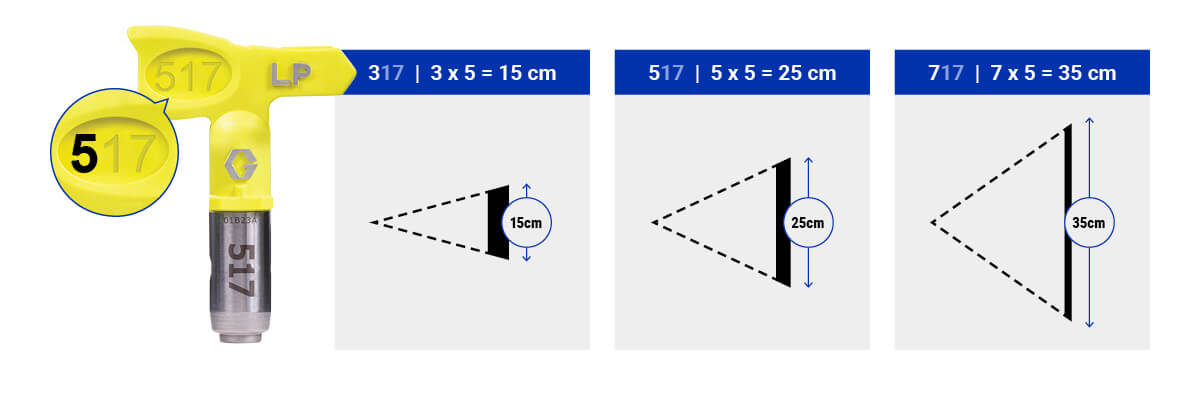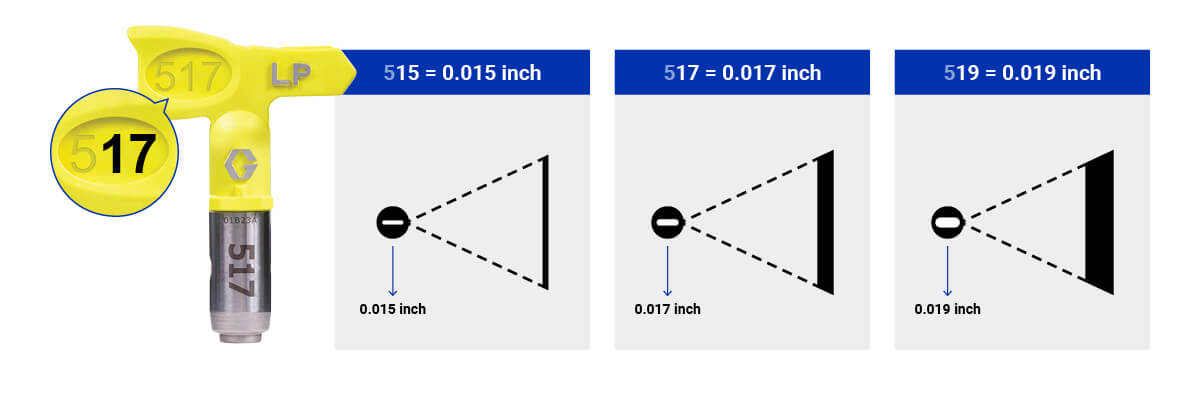Cracking the spray tip code: what does a spray tip tell you?
Check and understand what the 3-digit codes on airless spray tips tell you.
Knowing what tip colour and 3-digit code to look for helps you to make the right tip choice and get optimal spraying results for your application.
Understanding the meaning of tip colours and knowing how to interpret the codes printed on spray tips is not as difficult as you might think. Start with selecting the right tip colour for your application, decipher the 3-digit code for getting a tip with the right fan width and tip orifice and you’re all set! Working with the right tip enhances the quality of your spray job and makes the tip last longer as well!

Looking at the colour of a tip, you know what application it is preferably used for.
- Green tips are meant for spraying fine finish applications with thin material (such as varnish, laquers, stain) at the lowest pressure.
- Neon tips are suited for every interior and exterior paint job. They offer high productivity at the lowest pressure.
- Blue tips are meant for wall painting and spraying in general. Like neon tips, they offer high productivity and are suited for latex, paints and emulsions.
- Brown tips are the heavy duty tips meant for plastering and less fluid materials.
- Grey tips are heavy duty tips for protective coatings sprayed at up to 500 bar.
- Yellow tips are specifically meant for line marking applications.
The higher the first number, the larger the fan width
The first number matches the spray angle. Multiplying the first number by 5 gives you the fan width if you hold the pistol 30 cm from the surface. So obviously, the higher the first number, the larger the fan width. When you use a spray tip with a higher first number, but same last 2 numbers, the paint layer gets thinner.

The higher the last two numbers, the higher the material output
The last two numbers of the 3-digit code indicate the size of the spray orifice, in one thousands of an inch. ‘17’ matches an orifice of 0.017 inch (or 0.43 mm). The higher the number, the bigger the orifice, so the more paint can be sprayed through the tip. Larger orifice sizes are also better suited for thicker materials. When you use a spray tip of which the last two number are higher, but same last first number, the paint layer gets thicker.

Let’s get started
Now you know how to crack the code, you’re ready to start choosing the right tip. Of course you also need to bear in mind what material you need to spray, and at what flow rate you want to work, as this also is determining for choosing the right tip. Read more in Choosing the right tip.
Related Articles
An introduction to Graco airless spray tips
Understanding Graco spray tips is all about colours and codes. Dive in to this comprehensive introduction.
How to choose the right airless spray tip in 3 steps
Discover how to choose the perfect airless spray tip in 3 easy steps, for flawless spraying any kind of material, from the finest varnish to the thickest plaster.
5 benefits of Graco’s low pressure (LP) airless spray tips
Graco’s low pressure airless spray tips make you spray at half the pressure while getting top spray results and extend the life of tips 2 times.

